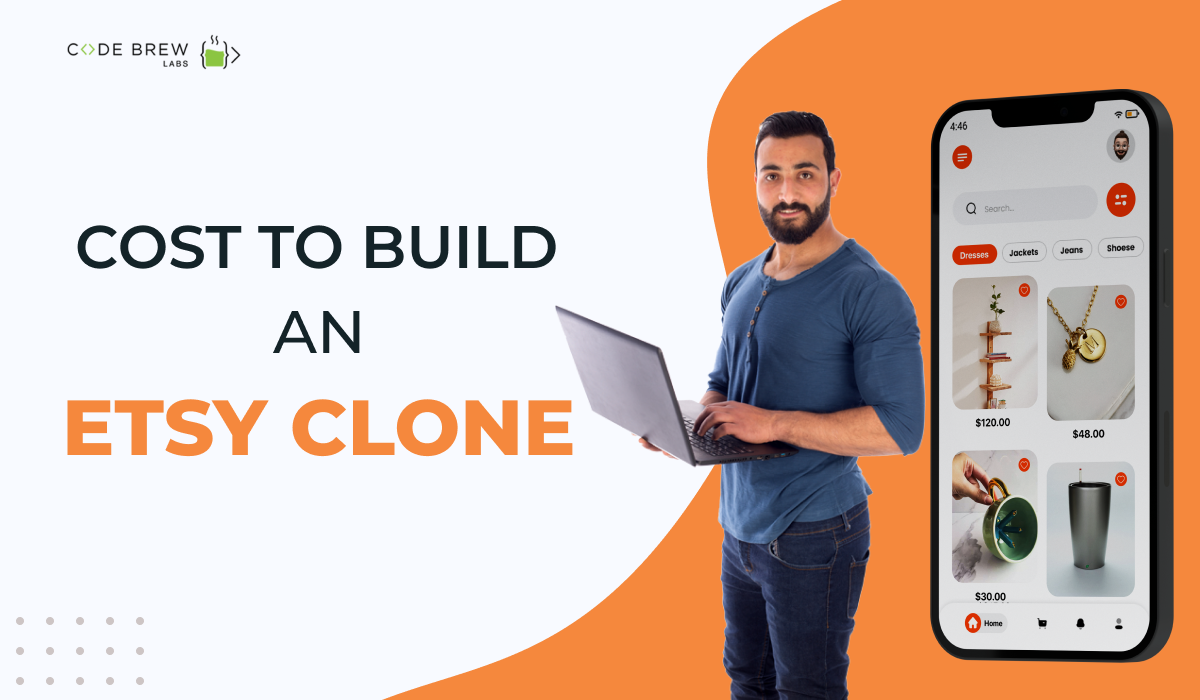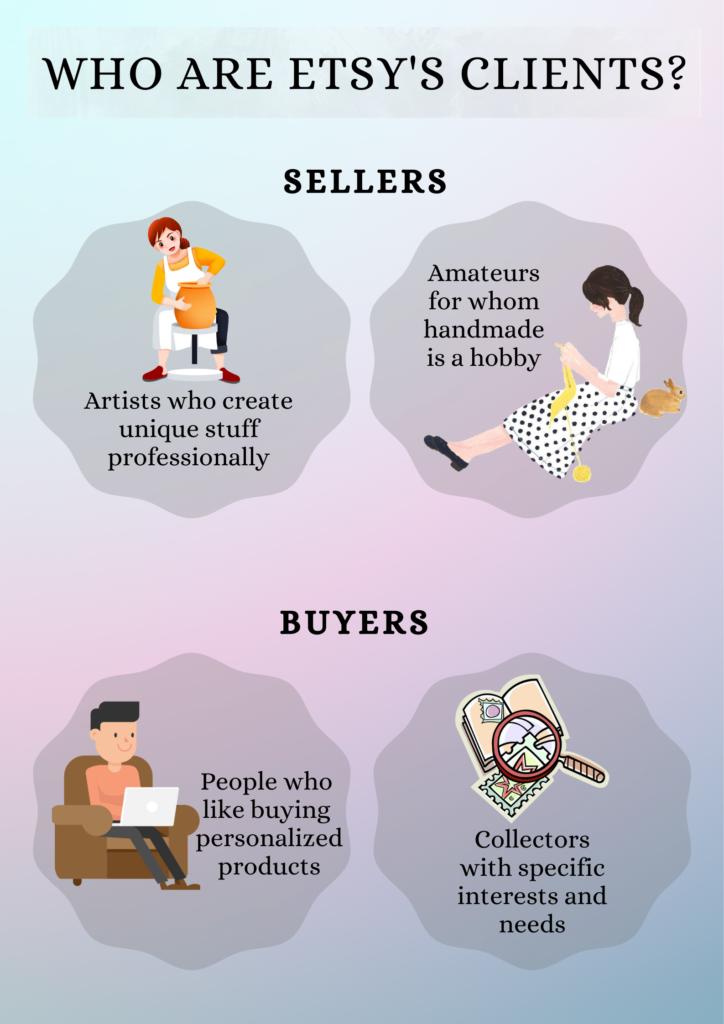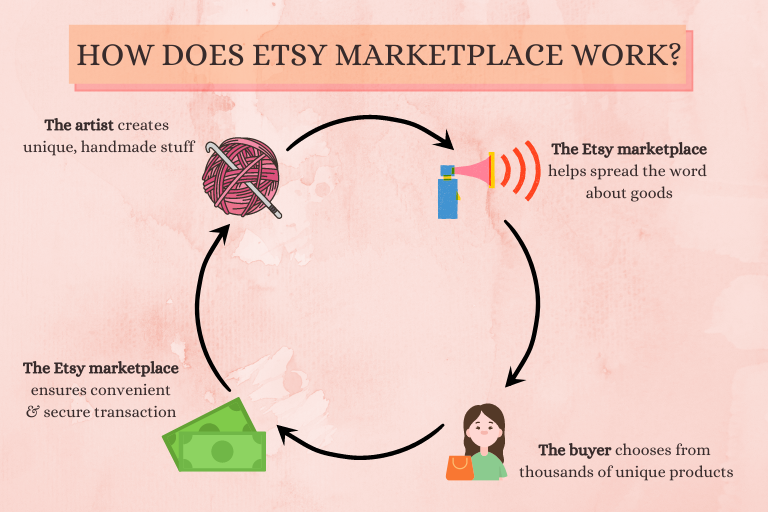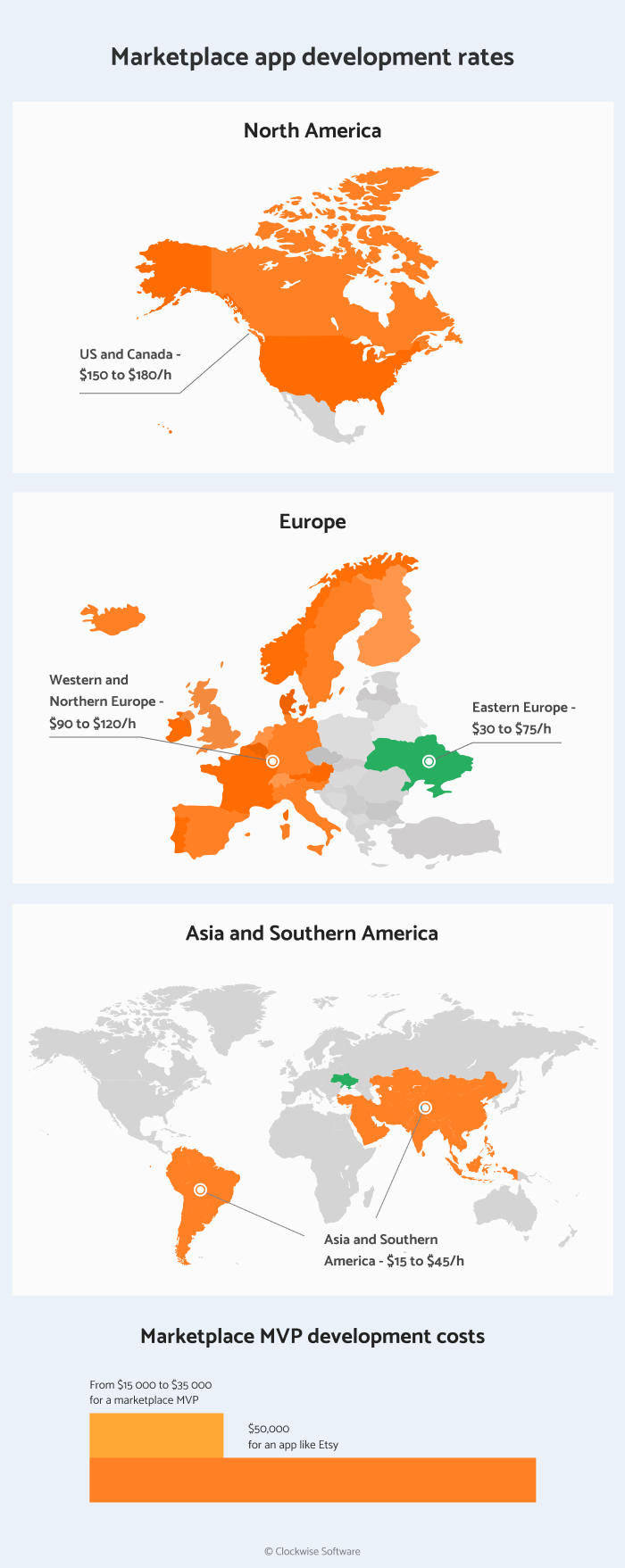
When you build a website like Etsy or an Etsy clone, you build an exclusive P2P marketplace. It is a one-of-a-kind marketplace where buyers can browse a wide selection of unique products.
Table of Content
Etsy only allows listings of vintage or handmade items. A majority of buyers purchasing an item from Etsy never return to mass market stores. There are numbers to prove this: 81% of Etsy buyers make repeat purchases.
But unique offerings are not the only factor that comprise Etsy’s USP.
Buyers on Etsy don’t talk to a company through a customer support executive. This is hardly the case with other brands.
In this way, the platform fosters warm, one-to-one communication between buyers & creators.
The makers of Etsy have heavily invested in developing a strong international community of creators. Here, like-minded people meet, exchange experiences, and inspire each other!
To date, no other online marketplace has yet been able to offer this to artists and art lovers.

Before you get to ‘how to create an online marketplace like Etsy’, make sure that your Etsy clone has these features:
Each product must have its individual listing. This helps sellers share detailed product information with potential buyers.
Product listing pages must give sellers the ability to enter a description, add images, & include variants like different colors or sizes. Each listing should provide the buyers an option to review or rate the seller.
Also, include a link to their profile or other related items they sell.
These build trust between marketplace users. Both buyers and sellers should be able to create profiles.
Customers must be able to seamlessly navigate your marketplace and find the products they’re looking for.
For your Etsy clone, which is a product-based marketplace, it’s best to organize listings by product category. Each category may further have sub-categories.
For example, the jewelry category might have sub-categories like necklaces, bracelets, and earrings.
Also, add a search function for the buyers to quickly find specific items.
Reviews are critical in building trust between buyers and sellers. Sellers with more reviews tend to be more successful. Reviews typically include a rating, a couple of sentences of feedback, and sometimes, product pictures.
Have a secured payment gateway in your Etsy clone. This minimizes threats & ensures smooth transactions.
Buyers and sellers need to communicate for various reasons. Often, buyers have questions for sellers about their items. Besides, sellers may want to let buyers know that their item has shipped.
An online marketplace like Etsy achieves this with a messaging service that allows buyers and sellers to talk directly with each other.
Many platforms like Etsy host sellers that make unique, one-off items. So, mark it as out-of-stock so that other customers don’t attempt to buy the item.
Have robust stock management systems in place for sellers who need them for high-volume products. Sellers need such tools to manage availability & production.
These tools ensure that popular products are always available to buyers.
As soon as the buyer decides to buy a product, they can add it to the shopping cart. The cart section can contain multiple items up to a certain limit.
The buyer can then view the total amount to pay–including delivery and taxes. The cart only holds on to an item until the product is completely sold out.
The user will be notified in that case. Changes in prices will also be immediately updated.
| Admin Features | Seller Features | Buyer Features |
| Simplified commission setting. | Perfect order management. | Dedicated mobile application to buy products. |
| Exclusive dashboard to understand the business performance. | Dedicated seller page to manage their store. | Easy registration process. |
| Invoice management. | Excellent inventory control. | Advanced product search. |
| Easy customer and seller management. | Internal chat system and many more communication channels to
communicate with buyers. |
Review and rating system. |
| Reports and analytics. | Easy transaction management. | Add products to the wishlist. |
| Category management | Reports and analytics. | Manage personal profiles. |
| Tax management | Create their own pages with vendor-specific store URLs. | Manage payment methods and view transaction history. |
After purchasing a product, a buyer expects it to be shipped quickly. So make sure your Etsy clone helps sellers fulfill orders as quickly as possible.
If your peer-to-peer marketplace sells unique, high-value items, buyers and sellers may want to meet face-to-face. In that case, make sure to add location features too.
The favorites section or the wish list stores up items that the user wants to purchase later.
So, instead of adding products to the cart & abandoning them, buyers on your Etsy Clone can save the product under their wish list.
As your peer-to-peer marketplace will host multiple people worldwide, there need to be various languages to support them all.
So, the Etsy Clone must have several language options into its platform and support panel.
This feature is specifically added for admins. If they come across suspicious IPs or reports, they can blacklist such users.
Once blacklisted, these IPs cannot access the platform at any cost.
For an app to run well, its tech stack should run smoothly. After all, the technology infrastructure lies at the core of an app’s functionality.
It’s best to opt for JavaScript-based tools:
LAMP Technology Stack
It is one of the most reliable, time-tested stacks known by developers, and includes:
MEAN Technology Stack
It is a modern technology stack entirely powered by JavaScript. It helps create high-performance & revolutionary single-page web applications.
MEAN consists of:

Several variables affect the cost to launch a peer-to-peer marketplace like Etsy. Some of these variables include:
Besides the points mentioned above, there are certain aspects that make up the majority of the app costs.
Etsy keeps adding new functions. So, you can’t simply duplicate their operation. We suggest that instead, you begin with a range of simple features that comprise the MVP.
Once the testing is done and all bugs are fixed, then graduate to adding other advanced features of Etsy.
The area where you reside impacts the charges you’ll have to incur to build an Etsy clone. And if you get the Etsy clone built offshore, your development budget will reduce up to 60 percent.

Source: Clockwise Software
As a rough estimate, here are some numbers:
The Platform’s Layout (between $300 – $1000)
At present, there are innumerable eCommerce sites on the market. The competitive market can easily overwhelm a newcomer with too many sites and options.
The rates offered by the leading mobile app development companies in your area are more or less the same. But within these companies, the expertise of developers and designers varies.
Depending on the number of features you want in your Etsy clone, the cost to develop a peer-to-peer marketplace like Etsy varies.
Solutions with rates ranging from $20 to $30 a month are available depending on SaaS. However, the prices fundamentally depend on the best builder of the industry.
The Design Part ($350 – $550)
This means the product’s construction and adaptation. In terms of traffic and transit, shop architecture plays a critical role.
It also helps shop owners in pursuing several sources of sales without limiting themselves to vendor commission or transaction prices. The remaining aspect is website hosting that starts from $20 onwards.
Price Card
Country |
Rate |
| US/Canada | $150 – $180/hr |
| Western & Northern Europe | $90 – $120/hr |
| Asia & Southern America | $15 – $45/hr |
Gauging the app metrics is as important-if not more than-as making the app itself. Some important metrics to look out for are:
It is the total value for goods or services purchased via the marketplace in a certain period–like a month or year.
It refers to the total number of payments made by buyers and payments made to sellers on the platform.
This shows the total amount a user spends on a transaction.
AOV = GMV / Number of transactions.
It is the final income the company receives after incurring all expenses.
Revenue = GMV — expenses.
It is the amount spent on marketing to get a customer.
CAC = Ad spend / Number of customers.
It shows what percentage of users create an account on visiting your platform.
Final Note
Inspired to build a peer-to-peer marketplace like Etsy? We at Code Brew Labs have a decade of experience in building top-notch mobile apps.
To build an Etsy clone with unparalleled features and performance, contact our expert team.
